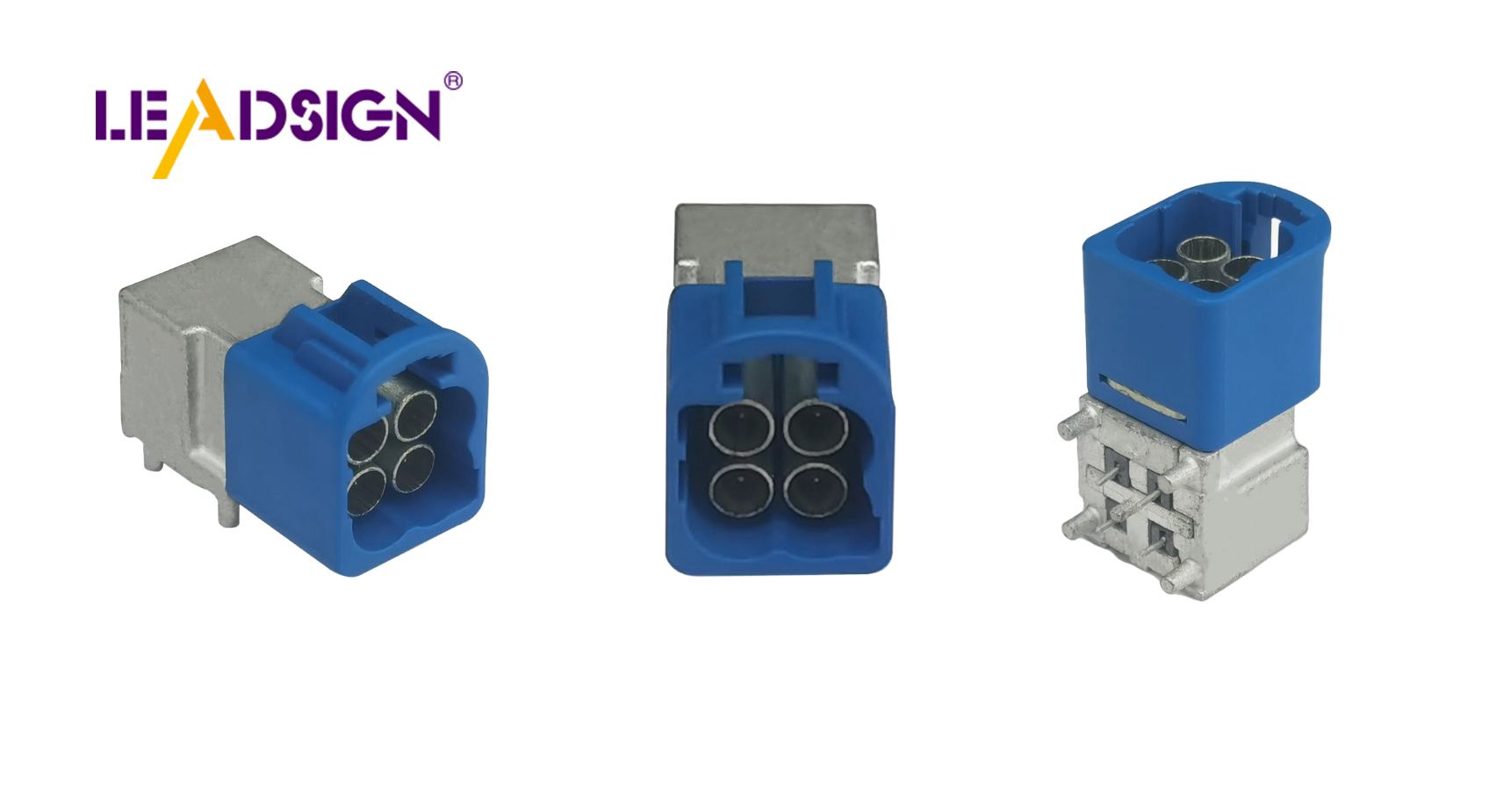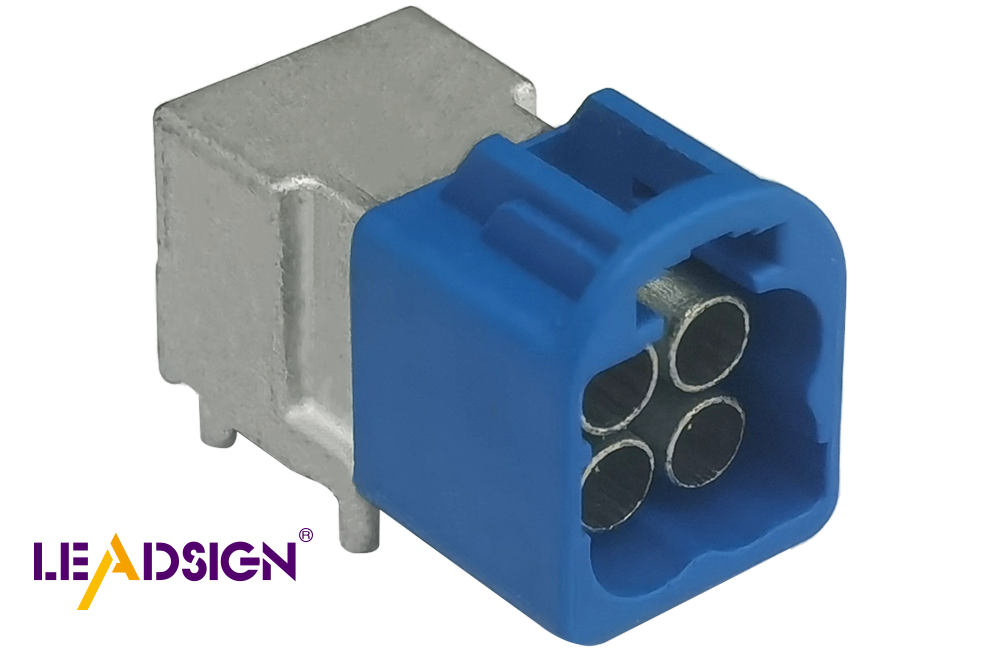Guide to Understanding Automotive Wire Specifications for Mini Fakra Connectors

Understanding automotive wire regulations is crucial for ensuring vehicles operate safely and efficiently. These guidelines are essential as the demand for auto wire and cables is projected to reach USD 3.48 billion by 2033, highlighting their increasing significance. Mini Fakra connectors play a pivotal role in the automotive industry, facilitating rapid data transmission necessary for advanced technologies such as self-driving cars and ADAS. Their compact size and adaptability make them indispensable for enhancing vehicle performance and connectivity.
Understanding Automotive Wire Specifications

Key Characteristics of Automotive Wires
Car wire rules are important for vehicle safety. Knowing these helps pick the right wires.
Wire Gauge
Wire gauge means how thick a wire is. It shows how much electricity it can carry safely. In cars, choosing the right thickness stops overheating and keeps things working well. Thick wires carry more electricity. Thin wires are for less electricity. Car wire sizes keep things safe and steady in vehicles.
Insulation Material
The cover on car wires protects them from heat, water, and chemicals. Common covers are PVC, Teflon, and silicone. Each one protects differently. PVC is cheap and good at covering. Teflon handles heat well. Picking the right cover makes sure the wire lasts long.
Temperature Rating
Temperature rating tells how hot a wire can get without breaking down. Car wires face hot places often. So, picking the right temperature rating is key. Hot-rated wires work well even when it's really hot, keeping cars safe.
Standards and Regulations
Following rules makes sure car wires are safe and work well.
ISO Standards
ISO gives global rules for car wires to be safe everywhere. These rules talk about size, cover material, and heat limits.
SAE Standards
SAE makes rules just for cars to make sure wires last long and work hard every day.
Industry Best Practices
Best practices mean using good ways to choose and use car wires right. This includes checking often, handling carefully, and following maker tips to keep car wiring systems safe.
Mini Fakra Connectors in Cars
What Are Mini Fakra Connectors?
Mini Fakra connectors are important in today's cars. They help send data fast, which is needed for new car tech.
Design and Features
Mini Fakra connectors are small and light. This makes them great for tight spaces in cars. They can send data from DC to 20 GHz, keeping signals clear and fast. These connectors have many coding options like colors and shapes. This helps match signals correctly and fit together well. They come in straight or angled shapes to fit different boards.
Uses in Cars
Mini Fakra connectors are used in many car systems. They are key for self-driving cars, ADAS, GPS, and entertainment systems. They handle fast data up to 28 Gbps, good for big tasks like real-time sensors and driving tech. By boosting connections, they make cars work better and safer.
Matching with Car Wires
Making sure Mini Fakra connectors work with car wires is very important.
Types of Connectors
Mini Fakra connectors have different types for different car uses. Knowing these helps pick the right one. All types have a standard of 50 Ohms for good signal flow.
How to Install
Putting Mini Fakra connectors in right is key for system trustiness. Follow maker rules to keep connections safe. Careful setup stops problems like losing signals or noise. Checking them often keeps them working well longer.
Checking and Testing Methods
Checking Wire Details
Checking wire details makes sure car wires are safe and work well. There are two main tests: electrical and mechanical.
Electrical Checks
Electrical checks see if a wire carries electricity well. Workers look at things like resistance and capacitance. These checks show if the wire can handle power without getting too hot. Good electrical checks mean wires work right in cars.
Mechanical Checks
Mechanical checks look at how strong car wires are. This means testing how much they can bend or resist scratches. Workers test wires to see if they can handle tough car situations. By doing these tests, makers make sure wires stay strong.
Keeping Connectors Working Well
Keeping Mini Fakra connectors working is key for good car systems. This needs environment and strength tests.
Environment Tests
Environment tests check how connectors do in different places. Workers put them in heat, wet, and shaky spots. These tests make sure connectors work everywhere in cars. By copying real-life conditions, makers find weak spots to fix.
Strength Tests
Strength tests look at how long connectors last. Workers see how they do with lots of use and stress. They connect and disconnect them many times to check wear out. Strong connectors stop problems in important car parts, making cars more reliable.
Frequently Asked Questions (FAQ)
Common Questions about Automotive Wire Specifications
How to pick the right wire size?
Choosing the right wire size is important for cars. Wire size shows how much electricity it can carry safely. Thicker wires handle more electricity, stopping overheating. To pick the right size, think about how much power the system uses and how long the wire is. Longer wires might need to be thicker to stop losing power. Check your car's guide or ask an expert for help with picking the right wire size.
What are common wire covers?
Wire covers keep car wires safe from heat, water, and chemicals. The most common covers are:
PVC: Cheap and good at covering wires.
Teflon: Great for hot places because it handles heat well.
Silicone: Bends easily and lasts long, good for moving parts.
Each cover has special traits, so choose based on what your car needs.
Questions about Mini Fakra Connectors
How to make sure they fit with current systems?
To make sure they fit, know both Mini Fakra connectors and car wires' details. Check if the connector's impedance is 50 Ohms to match your system. Look at connector type and style to see if it fits now. Follow maker advice or ask a pro for fitting help.
Why use Mini Fakra connectors?
Mini Fakra connectors have many perks in cars:
Small Size: Saves space in vehicles.
Fast Data Sending: Handles up to 28 Gbps data speeds.
Many Coding Choices: Different colors and shapes help link signals correctly.
These perks make Mini Fakra connectors a smart pick for better car performance and links.
This guide looked at car wire rules and Mini Fakra connectors. Knowing these helps keep cars safe and working well. Following rules is key for good car systems.
"Safety needs following the right rules exactly."
For special uses, ask experts for help. They know how to make sure everything works well together in cars.
See Also
Exploring the Significance of Mini Fakra Connectors in Cars
Discovering the Benefits of Mini Fakra Connectors in Vehicles
Unveiling the Potential of Mini Fakra Connectors: An Extensive Overview
An In-Depth Manual on Fakra Male Connectors
A Thorough Exploration of Fakra Connectors: Fundamentals, Varieties, and Uses

